Everything you’ve ever wanted to know about being a vegan athlete, including 8 tips for sticking with it, recipes, a meal plan and plant-based protein list.
Table of contents
Although I’m not vegan, I receive many questions from readers who are vegan or want to try a vegan lifestyle. More and more, endurance athletes are adopting a vegan diet for a variety of reasons–health, environment, performance.
However, whenever you limit your diet to certain food groups, it’s important to understand the nutrition implications in order to do it healthily. This post provides all the info you need to know about trying a vegan diet as an athlete.
What is a vegan diet?
Quite simply, a vegan diet is one that omits all animal products. In other words, someone following a vegan diet only eats plants.
A vegan does not eat meat, dairy, eggs or honey. Instead, the eat plenty of vegetables, fruits, nuts, seeds, beans, legumes, grains and soy products.
Although often used synonymously, the terms “plant-based” and “vegan” don’t always mean the same thing. The term “plant-based” isn’t strictly defined, and it can refer to a variety of ways of eating.
Some people describe their vegetarian diets as “plant-based”. Others use the term “plant-based” to refer to a vegan diet. And some people even use the term “plant-based” to describe a plant forward diet that includes some meat. [Related: Should Athletes Try A Plant-Based Diet?]
On the other hand, a vegan diet is strictly defined. It does not include any animal products and focuses on eating plants.
Is it good for athletes?
It absolutely can be! It depends on how you go about it. It’s easy to fall into the trap of eating junk food on a vegan diet and not getting enough nutrients. After all, Oreos, chips and fries are all vegan!
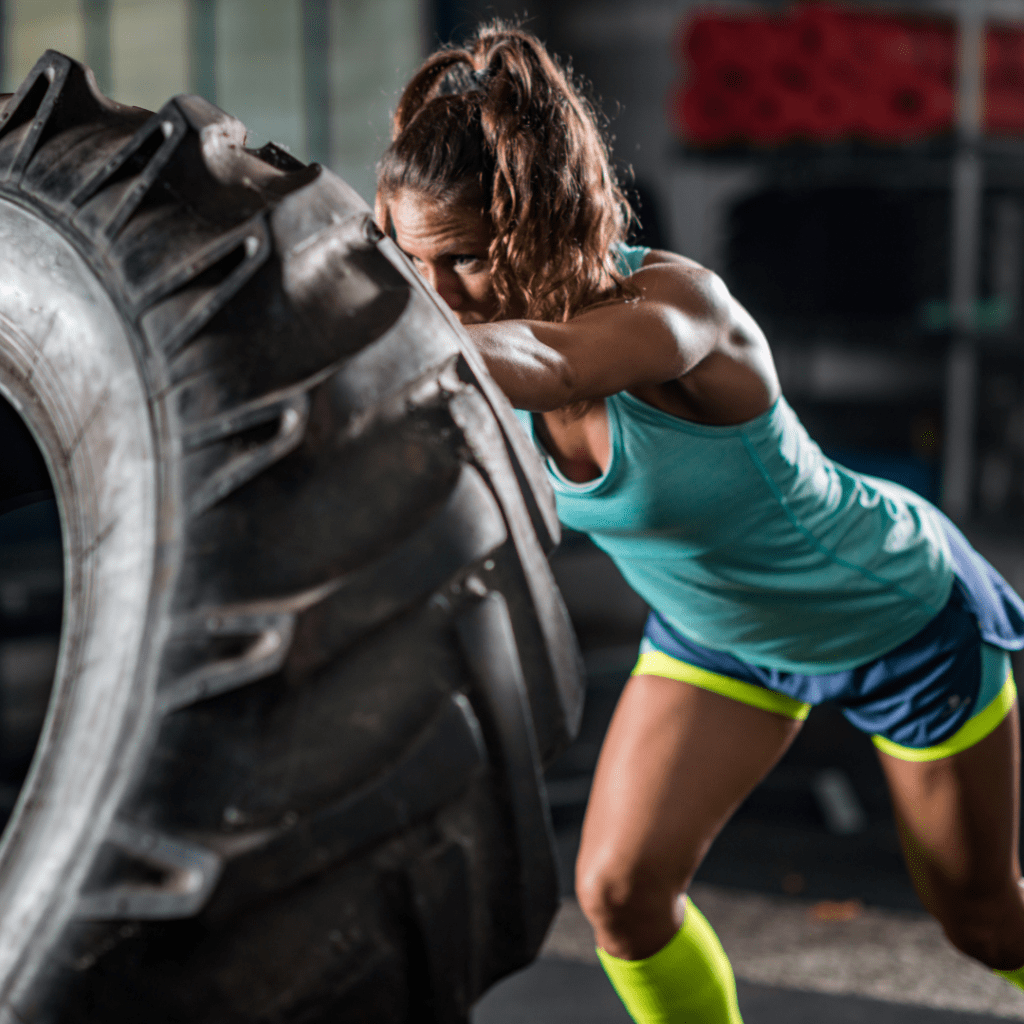
If you’re an athlete who decides to go vegan, it’s important to focus on eating a well-balanced diet. That means making sure you eat a variety of foods, stay away from processed junk and think about the nutrients that may be more difficult to get without eating meat.
The tips below will give you a jumping off point to build a healthy vegan diet for your athletic training.
Tips for a plant-based diet
1. Plan ahead
Every athlete, vegan or not, should have an eating plan. You need to think about pre-workout fuel, recovery nutrition and hydration on a daily basis. The following tips will help you do just that! [For more on those topics, check out The No-Brainer Nutrition Guide For Every Runner.]
Vegan athletes aren’t always able to find food on-the-go, so it’s important to plan your meals ahead of time. When making an eating plan, certain nutrients, like protein, fiber and healthy fats, need to be top of mind. These nutrients will ensure that you’re never starving throughout the day and have enough fuel to perform at your best.
The following tips will help you create a vegan meal plan, so you’re never left eating a protein bar for a meal.
2. Eat plenty of plant-based calcium
I’m a stickler for calcium because people in my family have Osteoporosis. I’ve written about bone health for runners, but let me stress again how important calcium is for athletes. You put stress on your bones on a daily basis, so calcium is necessary to keep the bones strong throughout the lifespan.
Calcium is most abundant in dairy, but vegans can eat these plant-based sources of calcium:
- Green vegetables, such as kale, broccoli, bok choy, turnip greens and spinach
- Soy products, such as tofu or soy milk
- 100% Orange juice and cereals that are fortified with calcium
- Check out this list for more options: 12 Best Plant-Based Sources of Calcium
3. Don’t skimp on healthy fats
Chances are that you burn plenty of calories while participating in your sport, but you don’t eat the majority of high calorie foods, like meats, cheeses and milks. If you don’t replace the calories that you use during exercise, you may start to lose weight, which can actually hinder your performance.
That’s where healthy fats come in! As compared to carbs and protein, fats have more calories per gram and can make up for the calories that you burn during intense exercise. Not to mention that fat keeps you full after a workout, so that you don’t binge on empty calories, like junk food.
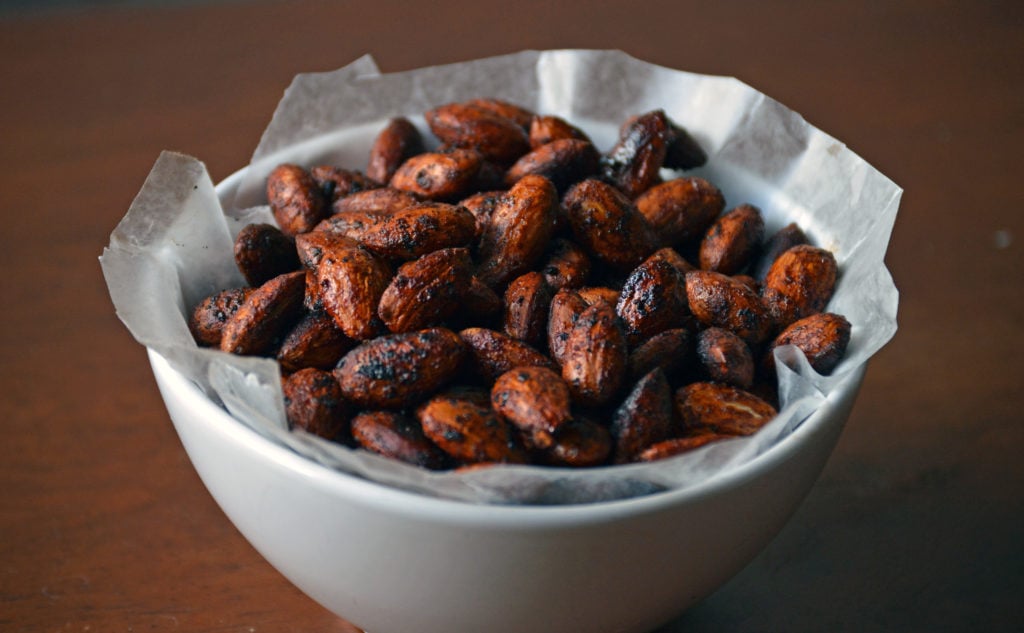
Vegans need to eat enough calories and omegas from plant- based healthy fats, like seeds, avocados, nuts and oils. Healthy fats also contribute to heart health and cognition, both of which are important for active individuals. Learn more here: How Much Fat Do Plant-Based Athletes Need?
4. Make sure you’re getting enough Vitamin B12
Vitamin B12 is the only nutrient that many vegans fall short on because it’s most prevalent in meat and eggs. A B12 deficiency causes extreme exhaustion and tingling in your fingertips, both of which can be detrimental to an athlete.
There are some sources of vegan B12–see a list of 5 sources here– but if you think you’re diet may be lacking, get a yearly physical and ask your doctor to check your B12 levels. If you are deficient, a daily supplement will help keep you at normal levels.
5. Keep “fake meats” to a minimum
There are so many “fake” meat products on the market. These products are easy (and sometimes yummy), but they are often packed with sodium and added sugars. The benefit of being a vegan is eating healthy whole foods, like fruits, vegetables, beans, legumes, and whole grains.
Straying from that diet can cause vitamin, mineral and protein deficiencies. Feel free to have the “fake meats” every once in a while, but stick with the whole foods the majority of the time.
6. Check the labels on sports nutrition products
Some gummies contain gelatin, and many protein powders are whey based–both of which come from animal products. Many other sports nutrition products are sweetened with honey. Here are a few of my favorite vegan sports products (affiliate links):
Clif Bloks— These are my go-to long run fuel. Not only do they taste like watermelon flavored gummy bears, but they are easy to carry, provide a caffeine boost and aren’t too rough on my stomach.
These UnTapped Organic Raspberry Waffle, Box of 16 UnTapped Maple Syrup Waffles make a great vegan alternative to the traditional Honey Stinger waffles.
7. Try simple recipes
Being a vegan athlete may sound overwhelming, especially when you’re cooking your own meals. But trust me, vegan recipes don’t need to be complicated. Sure, there are plenty of vegan recipes that call for soaking cashews or following a detailed recipe, but there are also a ton of vegan recipes that are quite easy.
I have plenty of simple vegan recipes on this site (you can find all of them here). Here are the simplest ones that come together in minutes.
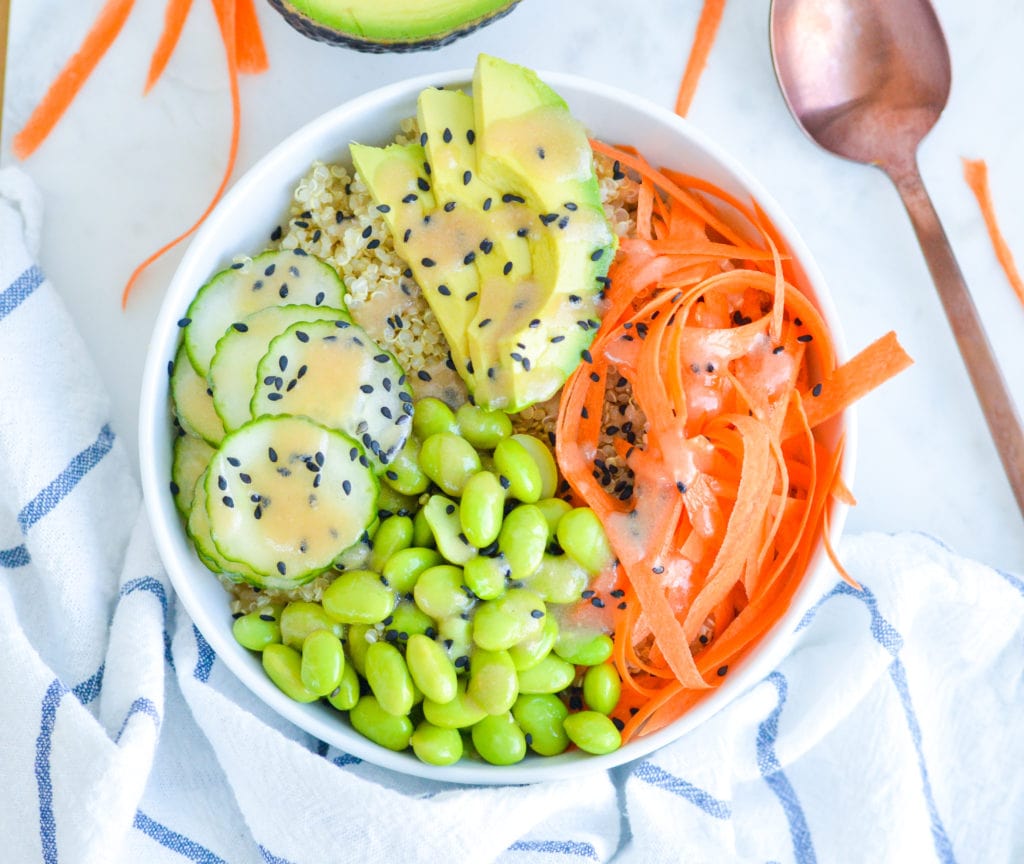
- Cinnamon Roasted Almonds
- Blueberry Maple Walnut Trail Mix
- Vegetable Barley Soup
- Vegan Couscous with Za’atar Vinaigrette
- Mediterranean Bulgur Salad
- Crunchy Roasted Chickpeas Two Ways
- Vegan Quinoa Sushi Bowl
- Spicy Cocoa Popcorn
- Smoky Sweet and Spicy Roasted Fall Veggies
8. Know your protein
This a no-brainer, right? The number one thing that people wonder about veganism is how to get enough protein. Not only is protein necessary for muscle growth and recovery, it also helps keep you full throughout the day.
But don’t worry, getting enough protein is totally doable, but you need to be mindful of vegan proteins and incorporate them at every meal– even breakfast.
Aim to spread your protein intake throughout the day and get equal portions at breakfast, lunch, dinner and just a little bit less at snack time. Protein needs are different for everyone, but this guide will help you determine how much is right for you. As a rule of thumb, aim to get at least 20 grams of protein at every meal.
Why is protein important?
Protein is a building block for muscle. During a workout, muscles experience normal wear and tear, and protein helps to repair and rebuild the muscles. In addition, protein plays a role in the health of hair, nails and teeth. Plus, it keeps you full and regulates hunger.
How much protein do athletes need?
The more active you are, the more protein you will need. Although you may not consider yourself an “athlete”, you still need to fuel your muscles with quality protein if you’re an active individual or fitness enthusiast.
Here are some numbers to consider:
- An endurance athlete (runner, swimmer, triathlete, boxer) needs about 1.0- 1.4 grams of protein per kilogram of body weight (0.45 – 0.63 grams per pound) per day
- A resistance athlete (focused on strength training) needs 1.2-1.7 grams of protein per kilogram of body weight (0.54- 0.77 grams per pound) per day
The key word here is athlete. These numbers are based off of a male who runs 10 miles per day at a 6-minute mile pace and a strength athlete who expends 14-15% of his daily calories lifting weights. For example, a collegiate soccer player and professional weight lifter.
Do plant-based (vegetarian or vegan) athletes need more protein?
Plant-based athletes don’t need more protein than athletes who eat meat, but they may need to pay more attention to taking in protein. Those who eat meat generally have no problem meeting their daily protein requirements. But vegetarian or vegan athletes can skimp on protein if they’re not careful.
The reason for this is twofold:
- You generally need to eat more plant-based proteins to get the same amount of protein as meat sources. For example, 3-ounces of chicken has about 21 grams of protein. The same 3-ounces of tofu has only 9 grams of protein. But, you can double the amount of tofu and still eat the same amount of calories as you would in 3-ounces of chicken.
- You need to have a protein plan. By this, I mean it’s important to make sure you are getting enough protein at each meal, including snacks. It’s really easy to eat carb-rich foods that have some protein, but not enough to meet your daily needs. For example, whole grains like oats, brown rice and quinoa definitely have protein, but pairing them with higher protein foods, like beans, lentils or soy products, really makes a protein rich meal.
Do plant-based athletes get enough protein?
This is a question I get asked all the time, and the answer is… it depends! Like everything in the nutrition world, it depends on the athlete, their training schedule and their diet. That said, it’s absolutely possible to get enough protein as a vegan athlete.
As a matter of fact, I delve into all of this in Greenletes Podcast Episode #9. To learn more about plant-based protein for endurance athletes, listen here:
I go into specifics about vegan protein, such as:
- what’s the general recommendation for protein and how does this differ for athletes?
- should you actually follow these recommendations?
- the timing of the “recovery window” and the importance of spreading protein intake throughout the day
- why protein is crucial for appetite control
- do plant-based eaters get enough protein?
- are plant-based proteins absorbed as well as animal proteins?
- plant-based protein sources and how they stack up to animal proteins
You’ll also learn more about plant-based proteins with tip #8. Make sure you scroll all the way to the end to see my list of the best vegan proteins for athletes.
List of plant-based proteins
After reading this list, you’ll recognize that you can get plenty of protein from vegan options. You may have to eat more food overall, but you’ll still get the same amount of protein and calories.
Here’s a simple example:
- 4 ounces of chicken breast has about 25 grams of protein for 110 calories
- 4 ounces of tofu has about 11 grams of protein for 90 calories
That means you need to eat twice the amount of tofu to get the same amount of protein. Combine it with these filling plant-based foods to make a complete meal.
If you’re thinking, “Ugh, I don’t think eating extra food is good for me,” the benefits far outweigh the downsides. Studies have shown that consuming a plant-based diet may reduce the risk of obesity, heart disease, high blood pressure, and Type 2 Diabetes. That’s probably not surprising since a diet high in fruits, vegetables and whole grains is full of ton of vitamins, minerals, phytochemicals and antioxidants.
The list provides as much healthy protein as a meat-based diet, plus plenty of healthy and quick vegan recipes for athletes to fuel.
1. Soy Products
When you hear ‘soy’, you probably think of tofu. But soy is the base of so many other products, like tofu, tempeh, edamame and soy milk (Read: Everything You Need To Know About Tofu). Soy is one of the few vegan protein sources that is considered a high-quality protein, meaning that has all nine essential amino acids that the body cannot make.
Tofu and tempeh don’t have strong flavors on their own, so they will easily take on the flavors of any marinade. Both a quarter of a block of tofu and a ½ cup of shelled edamame have about 9 grams of protein. Pick up a bag of frozen edamame from any supermarket to throw in the microwave and enjoy as a quick recovery snack after an intense workout. Or try one of the many tofu or tempeh recipes below.
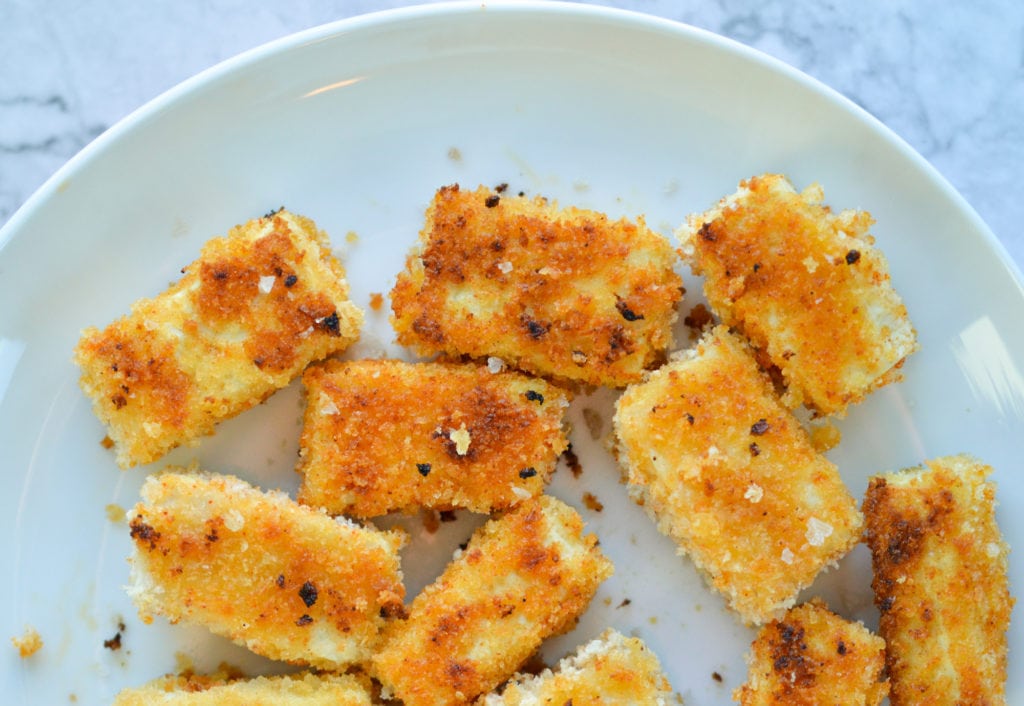
- Vegan Tofu Nuggets
- Butter Lettuce Salad with Tofu Croutons
- 17 Tofu Recipes For Every Meal of The Day
- Vegan Tempeh Burger
- BBQ Tempeh Rice Bowl
- 14 Tempeh Recipes
2. Quinoa
This pseudograin (it’s actually a seed) is one of the only complete plant proteins, besides soy. In other words, it’s a rare meatless protein source that contains all 9 essential amino acids. With a mild, nutty flavor, quinoa is a gluten-free alternative to other grains.
One cup of cooked quinoa offers about 8 grams of protein, and you can use it in salads, soups or just about grain bowls. Here are some of my favorite recipes with quinoa.
- Roasted Beet & Orange Quinoa Salad
- Southwestern Quinoa Power Bowl
- Vegan Sushi Quinoa Bowl
- Green Egg and Quinoa Muffins
- Black Bean & Quinoa Salad with Honey Lime Dressing
3. Seitan
Made from wheat gluten, seitan resembles the texture of ground beef or chicken. Because of that, it’s often the base for meatless burgers or nuggets. It has a savory umami taste, like mushrooms, but it will easily take on the flavor of the sauces and spices.
And the amazing thing is seitan has 21 grams of protein in just a 1/3 cup.
4. Lentils
I don’t like to pick favorite among plant-based proteins, but lentils are very high on the list (okay they are my favorite, but don’t tell the others). There are so many varieties, like brown, red and black, and they are chock full of protein.
A 1/4 cup of dry lentils (about 3/4 cup cooked) has 13 grams of protein– more than you’ll find in many other plants.
And lentils are also a great substitute for meat in dishes like tacos, meatballs or burgers, or they can serve as the base for a grain bowl. Here are some of my favorite lentil recipes.
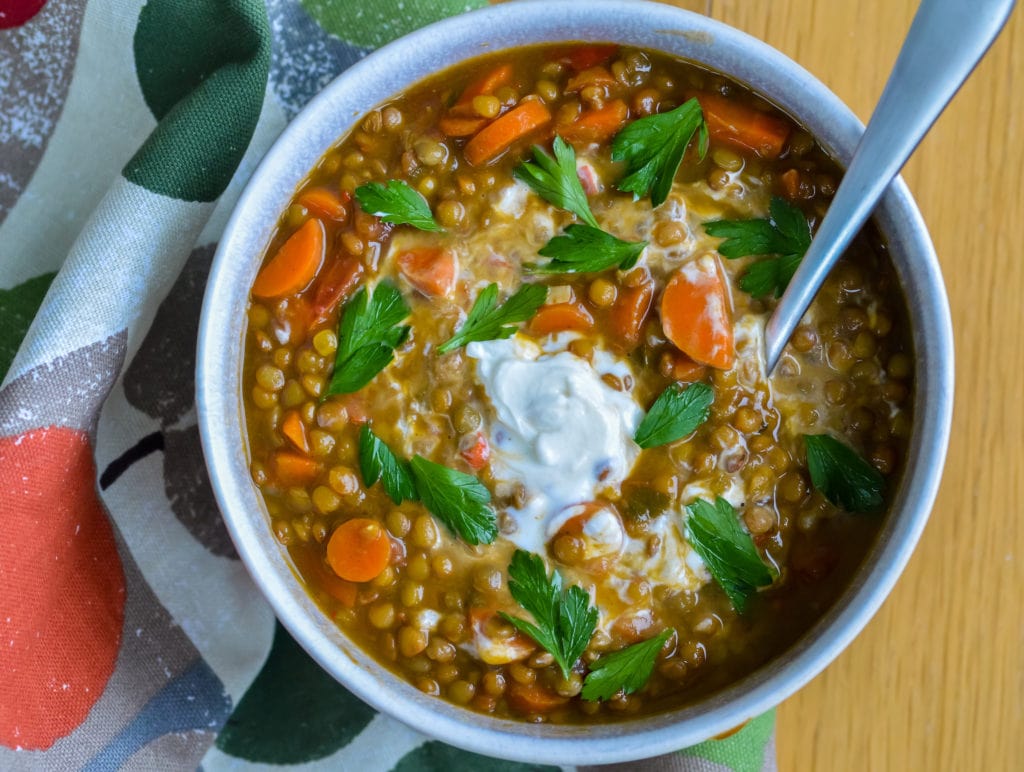
5. Beans
Beans are a staple for plant-based eaters, since they provide a wide variety of nutrients in a small package. Specifically, you get carbs, protein, fiber and other vitamins and minerals from beans.
Not to mention that you can buy them in a can, so you just need to open, rinse and eat. Plus, they are incredibly affordable and come in so many varieties.
Whether you like black beans, chickpeas, white beans, kidney beans or some other sort of bean, these are great sources of protein in the vegan diet. You’ll get about 8 grams of protein per 1/2 cup, and if you need some bean inspiration, here are some of my favorite recipes.
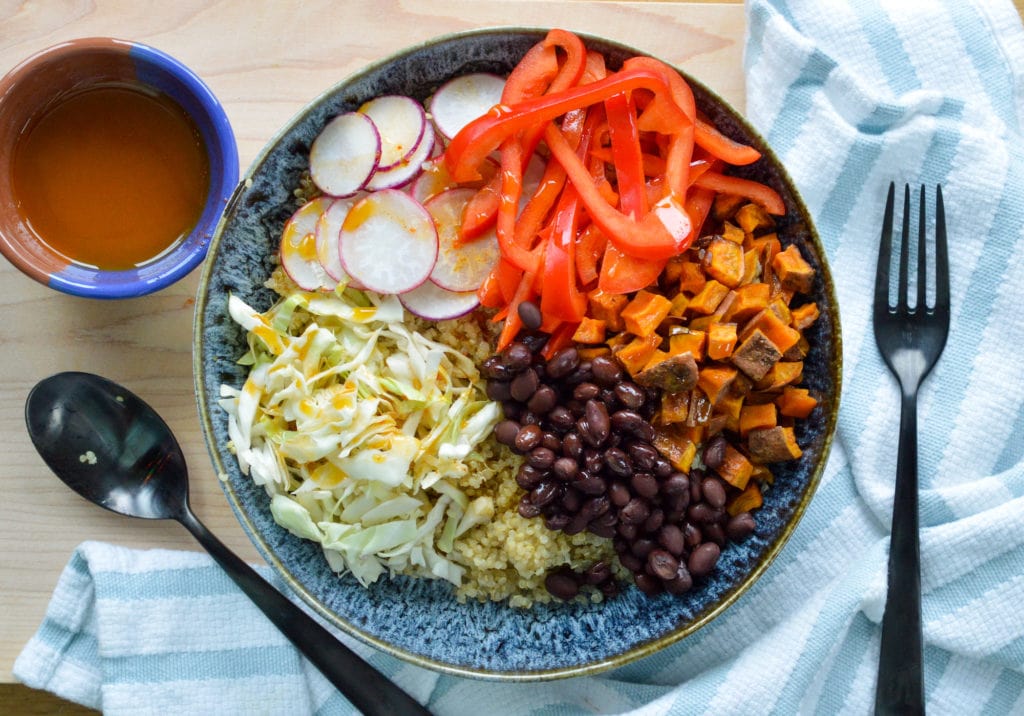
- Southwestern Quinoa Power Bowl
- Vegan Pumpkin Chili
- Buffalo Cauliflower Rice Bowl
- Roasted Crunchy Chickpeas
- Butternut Squash & Black Bean Tacos
- Black Bean Pumpkin Brownies
6. Oats
You may not think of oats as a source of protein, but whole grains have more protein than you may think. A 1/2 cup of dry oat makes 1 cup of oatmeal with 5 grams of protein. Although they might not be as high in protein as other items on the list, oats are easy to incorporate into your diet.
Try a bowl of oatmeal with berries, nut butter and milk after a tough workout or throw oats into a smoothie. If you like to make your own homemade breakfast or snacks, try these simple recipes.
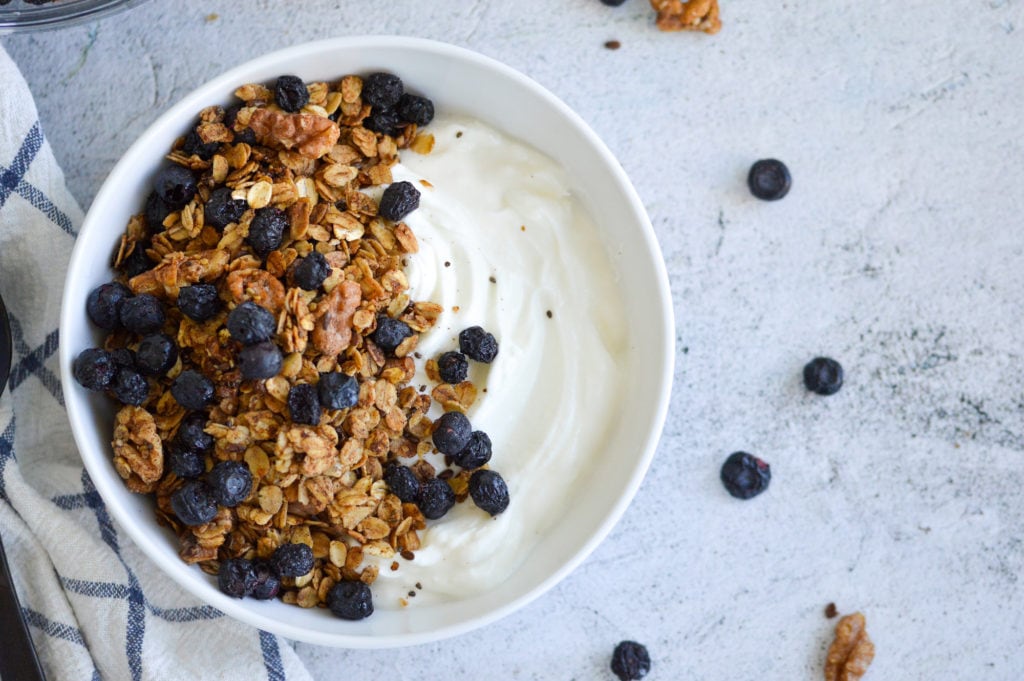
- Blueberry Maple Walnut Trail Mix
- Banana Chia Walnut Oat Cups
- Pumpkin Oat Breakfast Cookies
- Tahini Maple Oat Bites
7. Peas
These green beans are often overlooked because they aren’t always the most appealing. But hear me out, peas are a great source of plant-based protein.
A 2/3 cup serving has 5 grams of protein, and you can keep frozen peas on hand to make soup or throw into a stir-fry. I love to mash up peas with avocado for a little added protein. Then put the mixture on toast with a squeeze of lemon juice.
8. Hemp Seeds
This nutritionally dense seed is full of iron, zinc, magnesium and omega-3s. Try sprinkling some on avocado toast or a salad, or even putting a couple scoops of hemp powder into a smoothie or bowl of oatmeal. A 3-tablespoon serving will provides 10 grams of protein.


Great post, Natalie! I tried veganism for 1 week and honestly really struggled. I just always felt HUNGRY lol likely due to the fact that I do a lot of weight training and I’m used to getting in ~130 grams of protein/day and I didn’t come anywhere near that amount eating vegan. I definitely felt great outside of the increased hunger, though. But you’re spot-on with needing to know how to cook because it challenges you to get extra creative with your meals. Thank you for including my bars in your recipe round-up; if only I had that list to reference during my experimental week! Lol xoxo
Hi Natalie- interesting post. Like any dietary change, switching to veganism does take some extra effort and time. But shouldn’t everyone be mindful of what they are eating and take some time to learn more about nutrition? There are lots of active vegans (check out Plantbuilt, No Meat Athlete, Strong Hearts Run Team, etc) and vegan RD’s are who are experts on this topic. Many of these ‘issues,’ like mentioned by Jamie, can be fixed by simply eating more. The volume of plant foods is higher, so it feels like more, but is often fewer calories. I’m a 20-yr vegan and an RD, so if you have any more questions please lmk.
Thanks for the tips on sports nutrition for vegan athletes. I like that you said that you should have a plan to help make sure that you are getting everything you need. I think it might be smart to look into vegan meal plans that are already set up to make it easier and so that you will know that it will work.
Thanks so much! And I completely agree. I’m developing one as we speak 🙂
These are so important thing. Every athlete should follow this. So informative & brilliant also. Keep up the great job. Thanks.
What if a teen wanted to stay vegan in a sport that burns 5,000-6,000 calories a day in a sport that travels every day for 3 months in sometimes extreme heat?
Carry nuts and nut butters, avocados, eat as they ripen, eat nut butters w celery carry fruits that last, oranges etc. lemons squeeze in water, spirulina, green tea, but bags in water bottle, tofu non refrigerated, microwave, watermelon & cucumbers are cooling, blend watermelon and drink tons of this water. I used to eat a pint of tahini with fruit and celery after a swim, add nuts, seeds, hummus, tofu to a salad w olive oil dressings. Etc